- Home
- international
- news
- The US temporarily banned avocado imports from Mexico. Take a look inside the country's biggest avocado-producing region.
The US temporarily banned avocado imports from Mexico. Take a look inside the country's biggest avocado-producing region.
Marielle Descalsota

- Michoacan is at the center of Mexico's booming avocado industry, producing five-and-a-half billion pounds of the fruit annually.
- The state exports 80% of the avocados bought in the US.
This is Michoacan, a state in western Mexico. Its capital, Uruapan, has been called 'the avocado capital of the world,' per the Yucan Times.
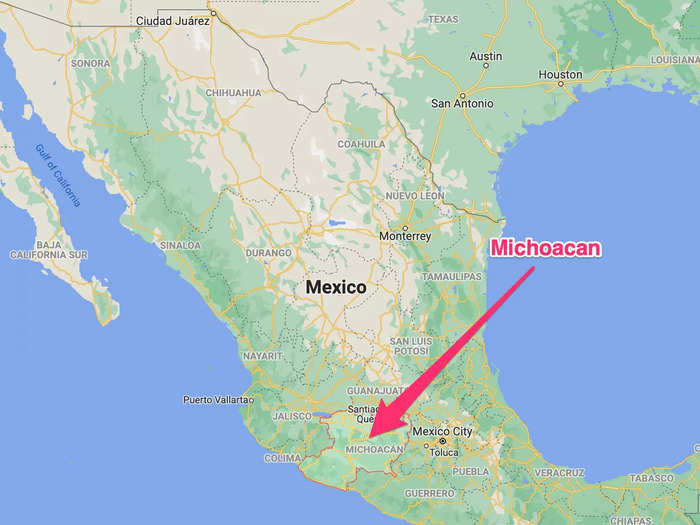
While Michoacan is Mexico's biggest avocado-producing region, it only spans an area of around 60,000 square kilometers (23,166 square miles), which makes it smaller than the state of West Virginia.
The state produces half of all avocados in the world, per the World Economic Forum.
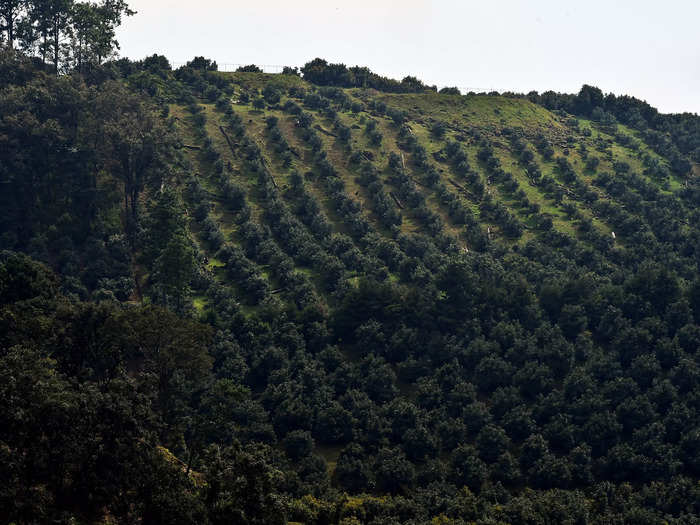
The state produces around five-and-a-half billion pounds a year, per the World Economic Forum. The national industry is worth $3.1 billion, with most of its exports going to the US, per Mexico News Daily.
Michoacan is one of the few places in the world where avocados grow all year round.
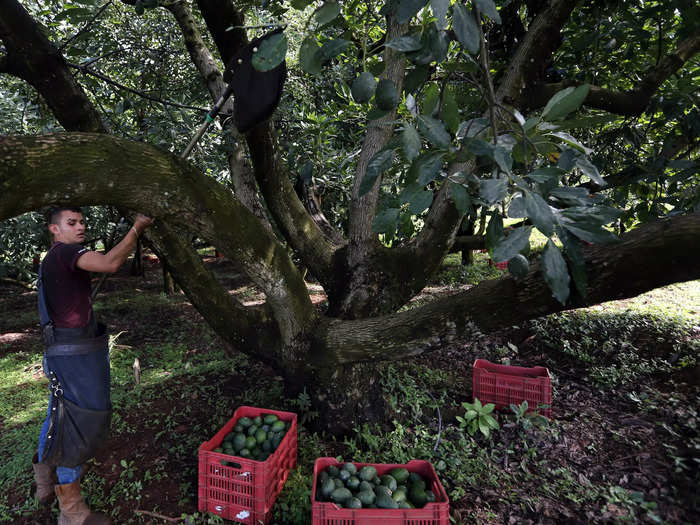
One reason for Michoacan's massive cultivation of avocados is its climate: Not only does it have rich volcanic soil, but there is also enough sunlight and rainfall throughout the year for the fruit to grow.
The region's mountainous landscape has 42,000 avocado orchards (like the one pictured above) located on high elevations — from 2,000 to 10,000 feet, per the Avocado Institute of Mexico.
Michoacan consists of several small farming towns, including Tancitaro, where some 30,000 people live.
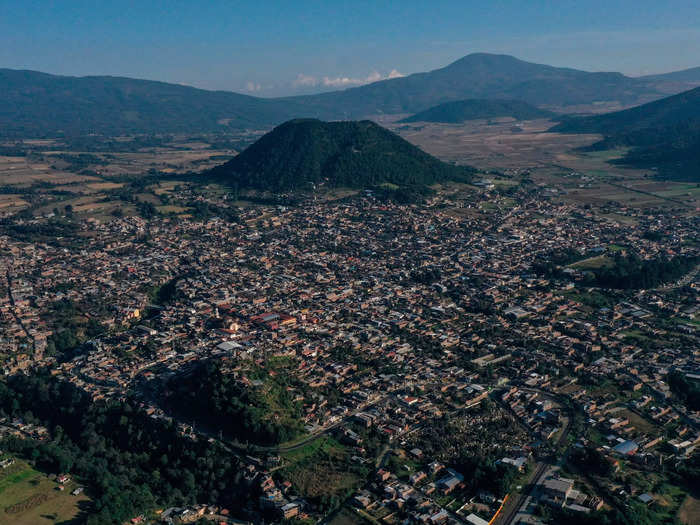
In February 2018, a former mayor estimated that the town exports more than $1 million worth avocados a day, per NPR.
Michoacan avocados account for 80% of all US consumption of the fruit. It is the only state in Mexico licensed to export avocados to the US.
The consumption of avocados in the US skyrocketed during the Super Bowl weekend.
Around 124 million pounds were expected to be eaten this year, usually in the form of guacamole, Vickie Fite, a spokesperson for Hass Avocado Board, told the Los Angeles Times.
"We know when it's Super Bowl time," Hugo Naranjo, a manager at a packing plant, told NPR in February 2018. "Our production jumps," he added.
Although avocados were sold for record prices in the weeks before the Super Bowl on February 13, the US temporarily suspended imports from Mexico on February 11 after a US official received a threatening message on his cellphone.
Many of these farming towns are under threat from cartels, who are seeking control of the lucrative avocado industry.
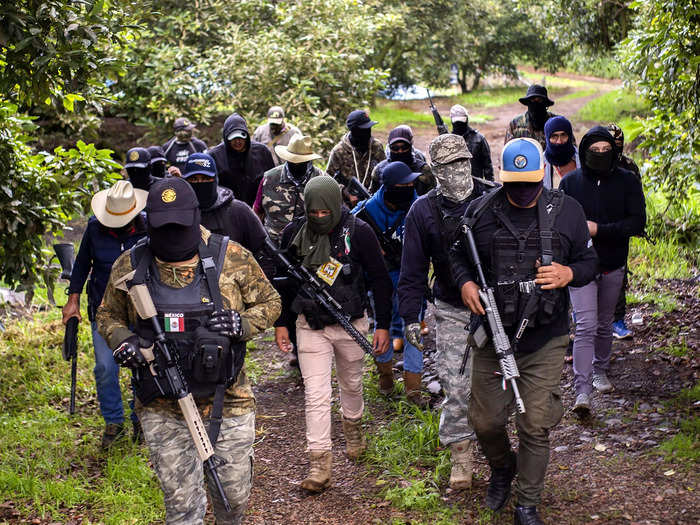
These cartels have diversified "their portfolios to include a range of legal economies," which include avocado production, Eduardo Moncada, an assistant political science professor at Barnard College, told WBUR Radio in December 2020.
Cartel Jalisco Nueva Generacion is the most powerful of these cartels. Despite being one of the youngest cartels in Mexico, the group is regarded as the most violent, per research institute START.
As the national avocado trade continues to grow exponentially, cartels have extorted and kidnapped farmers for money.
But some farmers have taken up arms to protect themselves against the cartels. According to one estimate, there are 50 self-defense groups in Mexico, which mostly comprise of farmers, per AFP.
The groups seek to protect their towns from "kidnapping, extortion and theft of avocados" by the increasingly violent cartels, per the wire.
Many residents have fled Michoacan because of the mounting cartel violence.
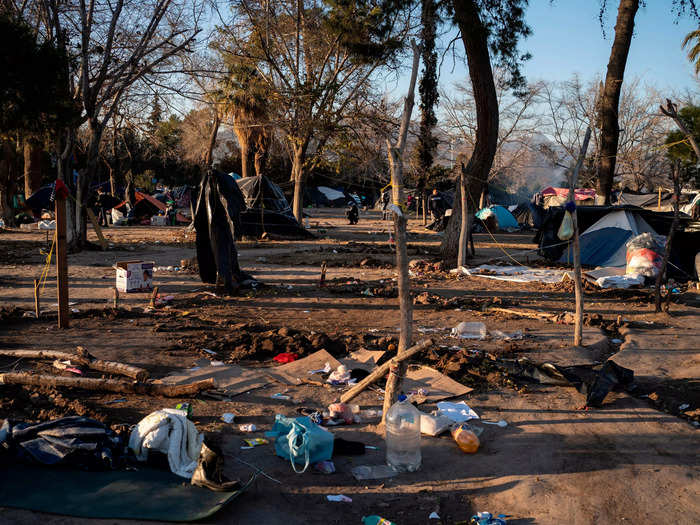
Over 22,000 people have left the state since late 2018, according to Gregorio Lopez, the founder of El Buen Samaritano (The Good Samaritan), per Mexico News Daily. Half of those people sought asylum in the US, Lopez told the news outlet.
Some villages have become ghost towns as residents have fled for safety up north or in neighboring states. El Cajon, a village in Michoacan, once had more than 100 residents. But with the escalating violence, the village now only has eight people living there, USA Today reported in October.
Around 60 homes were left abandoned in the village after residents were assaulted by cartels, per the newspaper.
Despite the state's thriving avocado industry, many people still live below the poverty line.
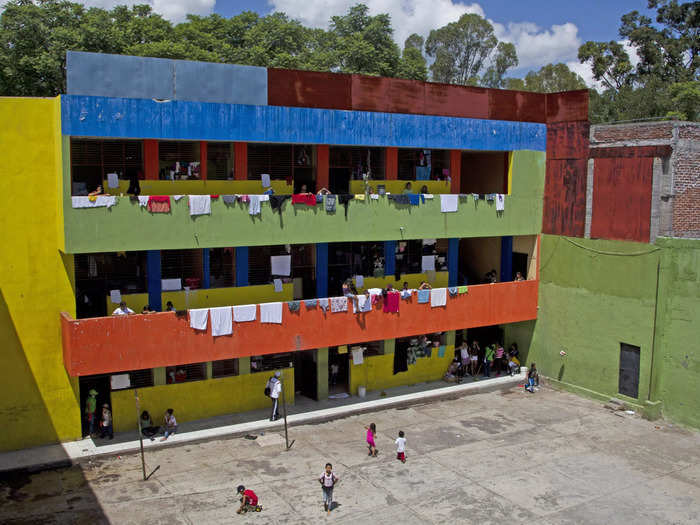
Although a lot of resources are spent on cultivating avocados — including about 9.5 billion liters of water every day from local aquifers — almost half of Michoacan residents live below the poverty line, per World Atlas. The state is the eleventh poorest in the country.
Living below the poverty line in Mexico means being an individual with a daily income of less than $1.90 a day, according to an April 2020 report by the World Bank Group.
While Michoacan has a robust agricultural and farming industry, the majority of people work in retail and trade services, according to a January 2021 paper by Anker Research Network on the region.
Michoacan has a significant Indigenous population.
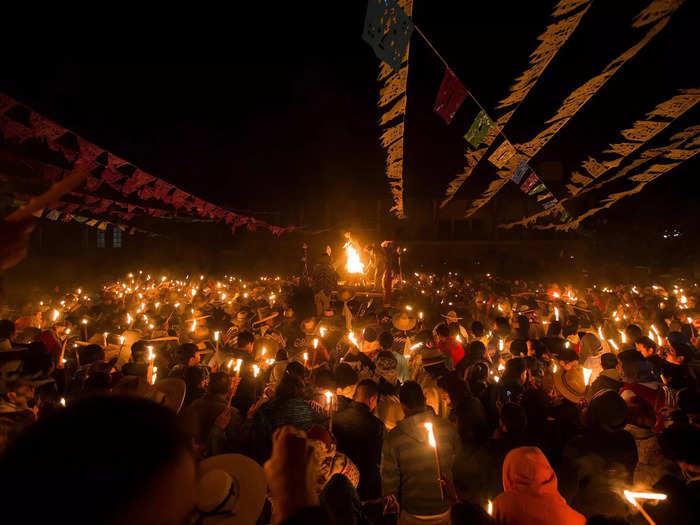
In Cheran, a municipality in the state, around 18,000 Purepecha residents belong to an Indigenous self-determination movement, per Reuters. There are about 50 Indigenous communities in the state who are campaigning for autonomy.
"Five hundred years after the invasion of Michoacan, the Indigenous people continue to resist and fight as our grandfathers did," the Supreme Indigenous Council of Michoacan said in a statement in February, per the AP.
READ MORE ARTICLES ON
Popular Right Now
Popular Keywords
Advertisement